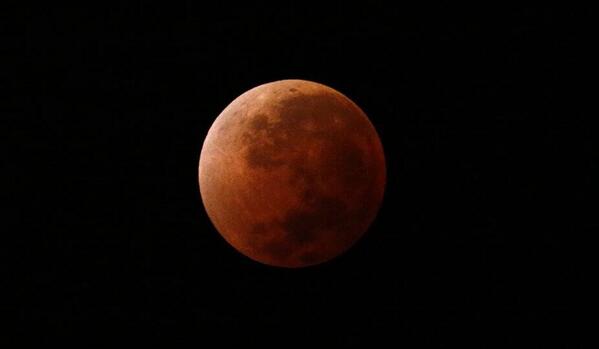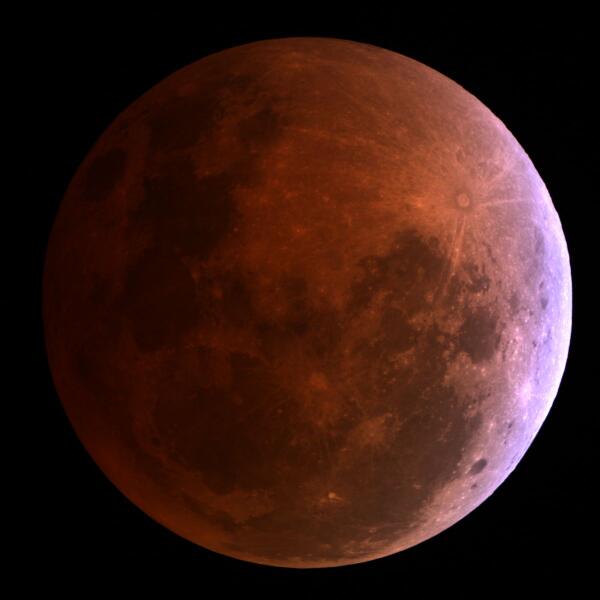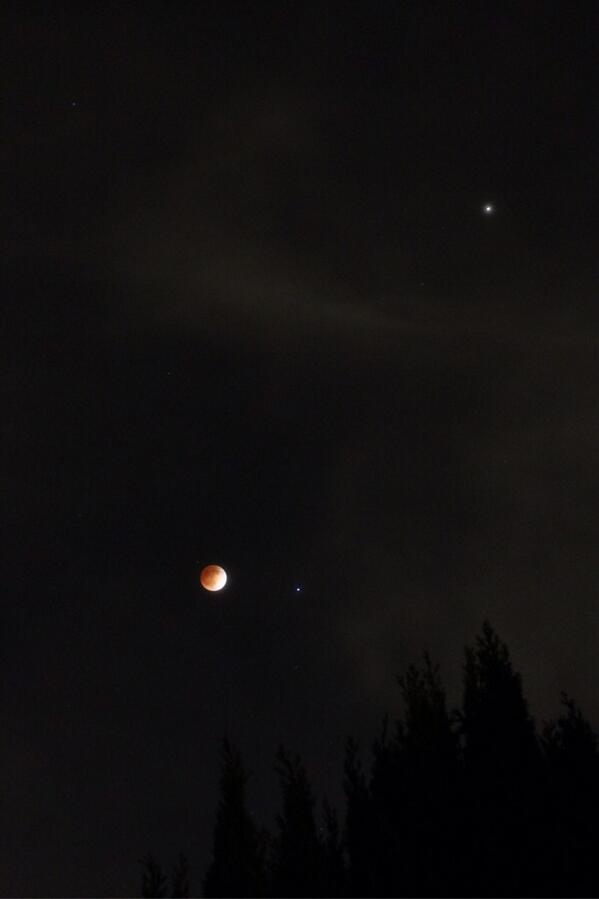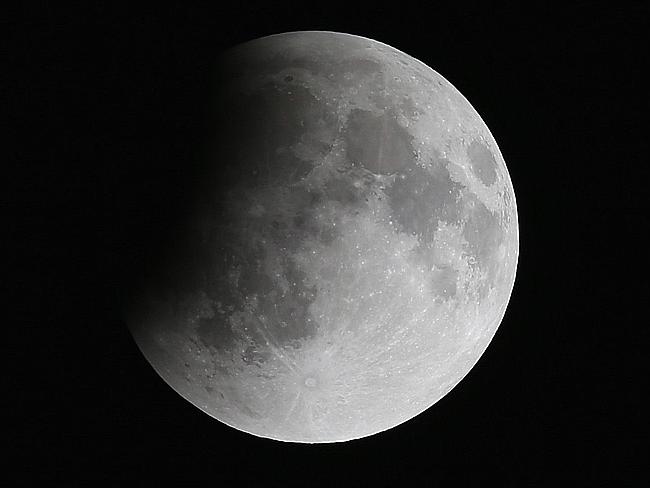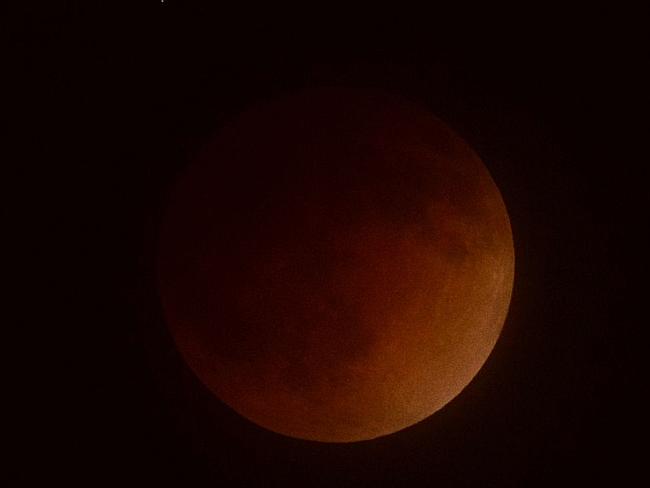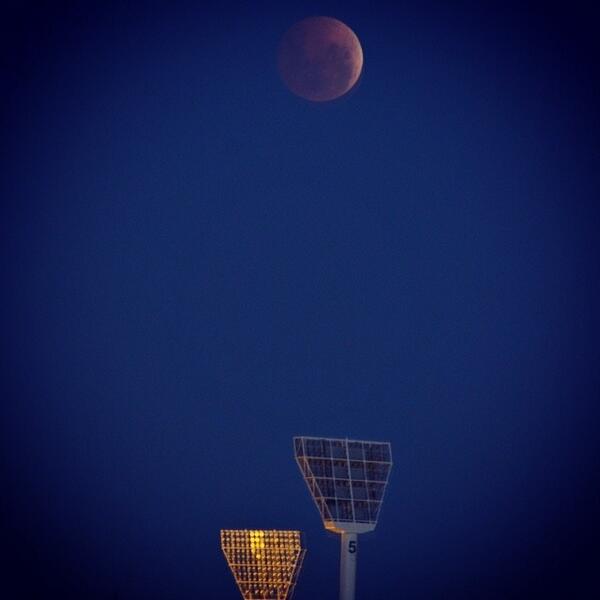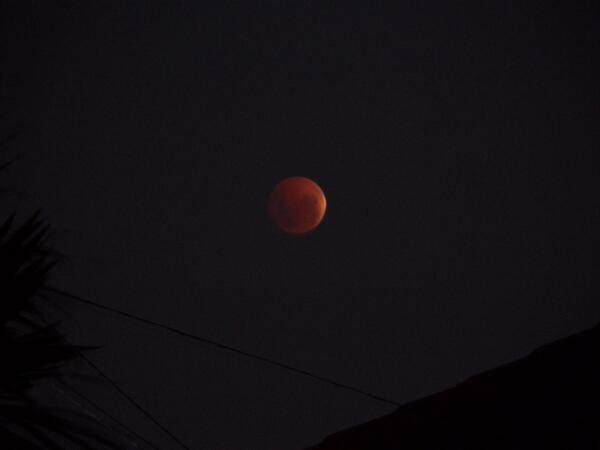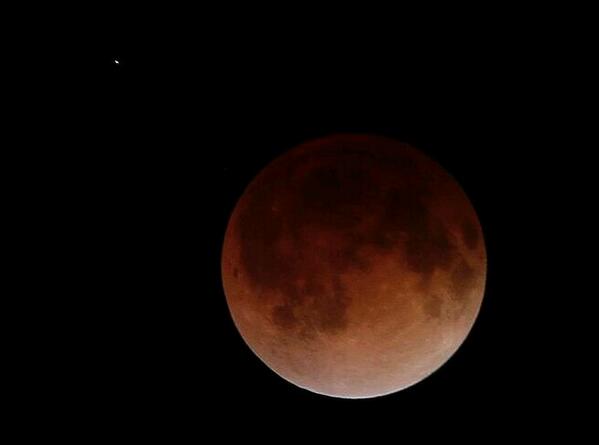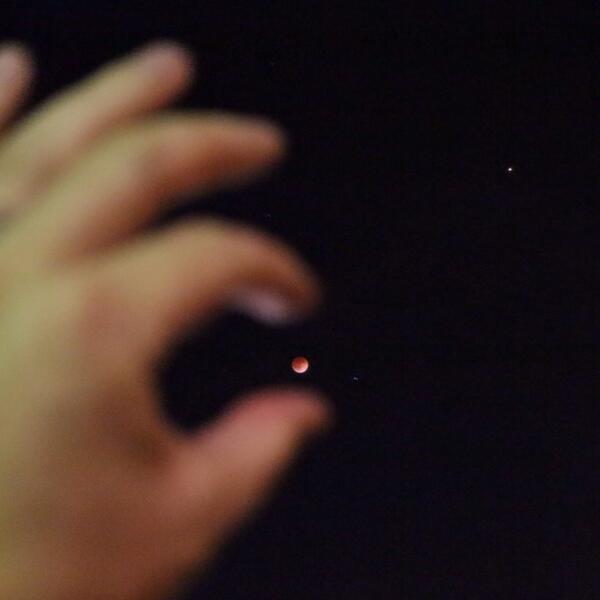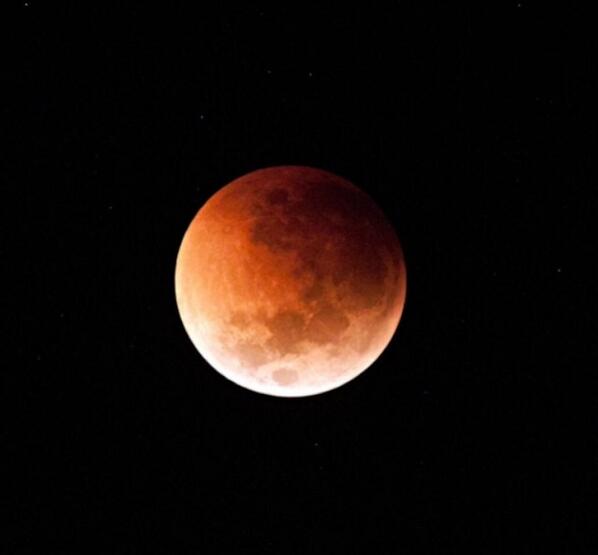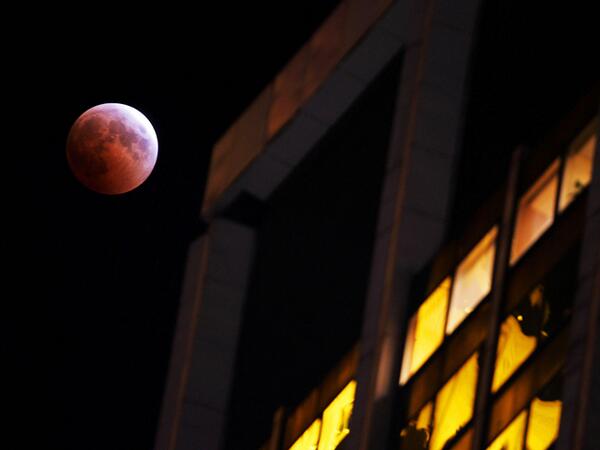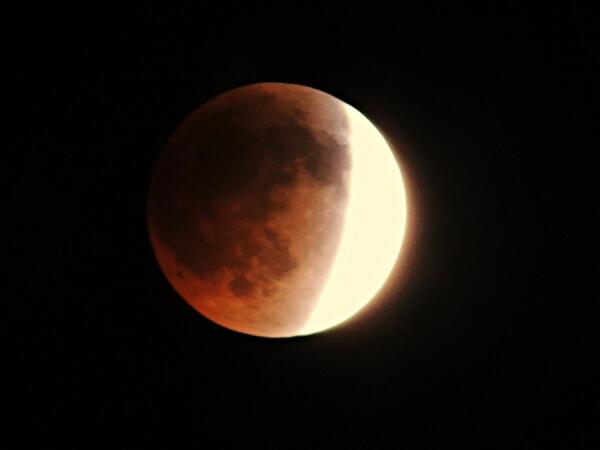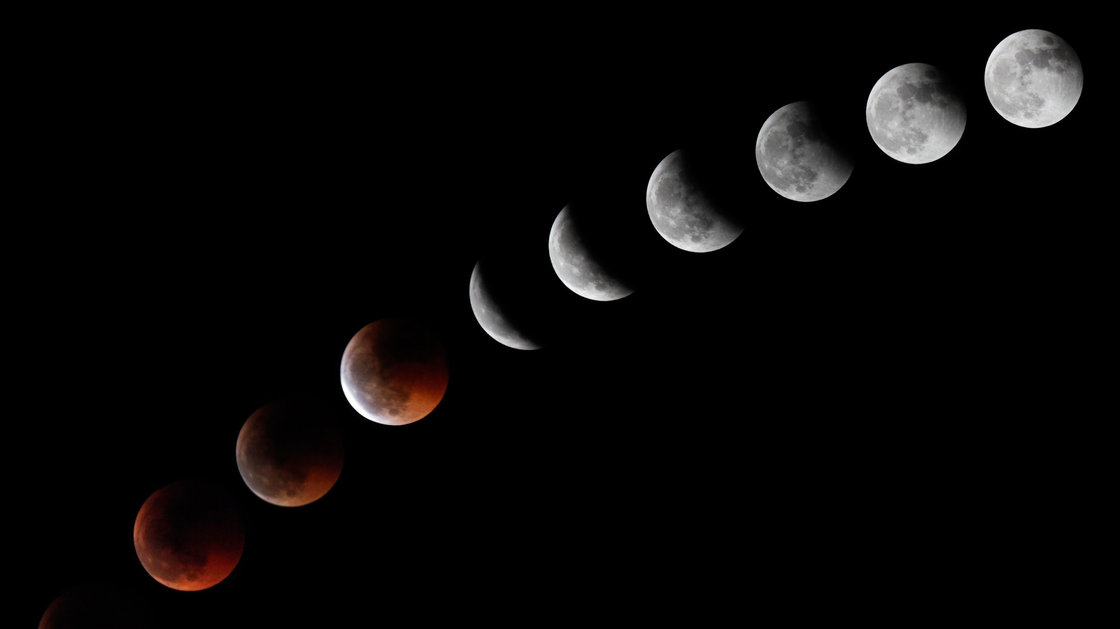[PHOTOS] Watch The Moon Turn Blood Red During A Total Lunar Eclipse
The first lunar eclipse of 2014, known as "blood moon", is lighting up social media tonight as people post photos of the moon and the eclipse.
The first total lunar eclipse in more than two years is gracing the skies right now, and it's so rare because it's visible above the entire Western Hemisphere
During the overnight hours of April 14-15, skygazers there will have a front-row seat as the full moon is painted red, creating what many call a "blood moon," as Earth's shadow creeps across the lunar disk. "Lunar eclipses are exciting because nature puts on a free show for everyone to enjoy, and it causes us to look back at the sky and reexamine our place in the solar system and beyond," said astronomer Raminder Singh Samra of the H.R. MacMillan Space Centre in Vancouver, Canada.
Lunar eclipses have been considered an awe-inspriring sky event for millenia, and ancient astronomers could do rudimentary but fundamental science with them, says Samra. "Many cultures have mythologies associated with lunar eclipses so there has always been interest in the eclipses," said Samra. "The ancient Greeks were able to use the Earth's shadow cast on the moon to predict the approximate relative sizes of the two bodies."
Lunar eclipses occur only when there is a full moon and the sun, Earth, and moon are precisely aligned for our planet's shadow to turn out the lunar lights. During a lunar eclipse, the moon passes behind our planet so that Earth blocks the sun's rays from striking the moon. Due to the moon's tilted orbit around the Earth, one doesn't occur every month. And total eclipses usually happen once every few years, though there are sometimes more than one in a year.
"Since the moon's orbit around the Earth is slightly inclined, it doesn't pass through the shadow every month, therefore every year we get an eclipse twice a year—very rarely we can get up to five," said Samra. Unlike solar eclipses, lunar ones are safely visible to the unaided eye. (A solar eclipse occurs when the moon comes between the Earth and the sun and blocks the disk of the sun.)
But why does the moon turn orange-red during a lunar eclipse?
During an eclipse, sunlight shining through the ring of Earth's dusty atmosphere is bent, or refracted, toward the red part of the spectrum and cast onto the moon's surface. As a result, expect to see the lunar disk go from a dark gray color during the partial phase of the eclipse to a reddish-orange color during totality. The same effect is at work when the sun turns red at sunset.
The moon's color during totality can vary considerably depending on the amount of dust in the Earth's atmosphere at the time. Active volcanoes spewing tons of ash into the upper atmosphere, for instance, can trigger blood-red eclipses. No one can predict exactly what color we'll see before each eclipse.
Why is this eclipse so noteworthy?
Beyond its occurrence over two heavily populated continents, the event has kicked off a lunar eclipse tetrad (group of four). For two years, a lunar eclipse will occur over the Western Hemisphere every six months. In addition to April 14-15, mark your calendars for this October 8 and for April 4 and September 28, 2015.
Who gets to see the sky show?
The #BloodMoonEclipse from my backyard. Mars (upper right), & Spica (right of the moon) is a binary blue dwarf.
Image via @biermann via twitterThe best views will be from the entire North and South American continents and much of the Pacific Basin, including Hawaii. Eastern Australia should get to see the second half of the show on the night of April 15, as the moon rises during totality. Europe, Africa, and central Asia, meanwhile, will miss the entire eclipse because it will be daytime in those regions at the time of the event.
cnn.comAs the hashtag #BloodMoonEclipse started trending worldwide on Twitter, many stargazers turned to social media to post pictures of what they were seeing
Many in North America started to see the moon slowly disappear, as it began its journey to pass behind Earth, into its shadow. Here’s how it looked close-up from a professional photographer’s view:
When it started to turn a slight shade of red, social media users got particularly excited. Here’s another professional shot:
A lunar eclipse begins over southern California ... as seen from the San Gabriel Valley, east of downtown Los Angeles.
Image via Frederic J. BrownSocial media users posted a variety of photos on Facebook, Twitter and Instagram. This is how it was seen by stargazers in Australia:
Here’s another professional image taken from the Mt Lemmon Skycenter in Arizona in the US, which was posted on Twitter
Twitter users are making this phenomenon trend in streams of #BloodMoodEclipse photos flooding cyberspace:
What's cool to think about is how many people are looking at the #bloodmoon this very second along with me!
Image via @caffeinatednzIt's cloudy in #Indiana, but that doesn't mean you can't get a live look at the #bloodmoon
Image via @rtv6Photo shows a time lapse of the moon during a total lunar eclipse, as seen from Mexico City
Back in 2011, the moon during a total lunar eclipse from the Spanish Canary Island of Tenerife shown in a combination of 10 separate images
